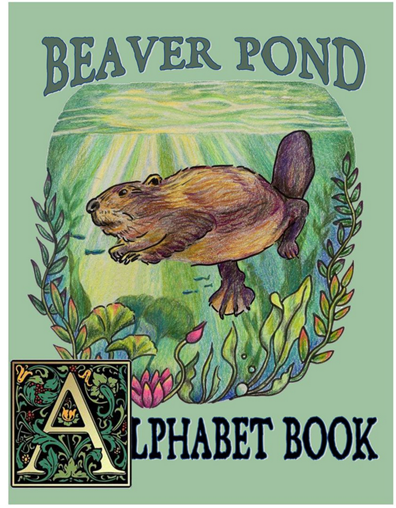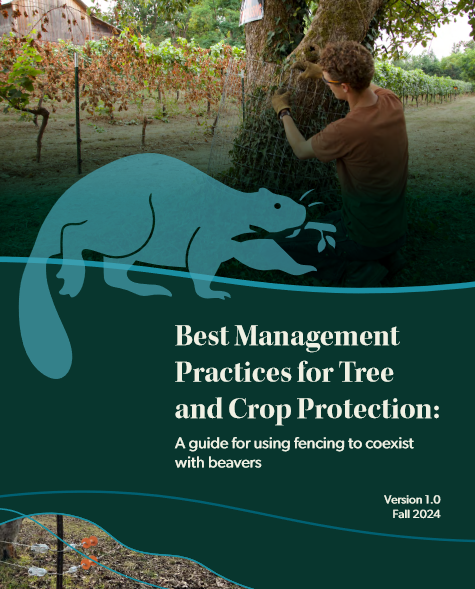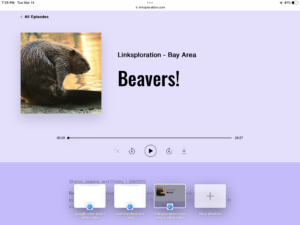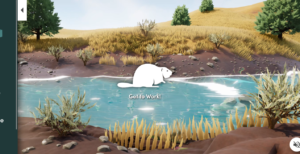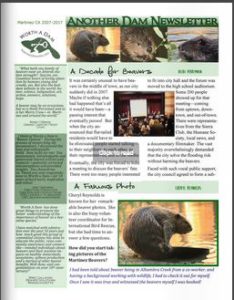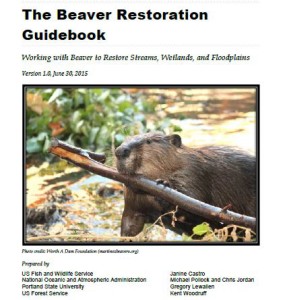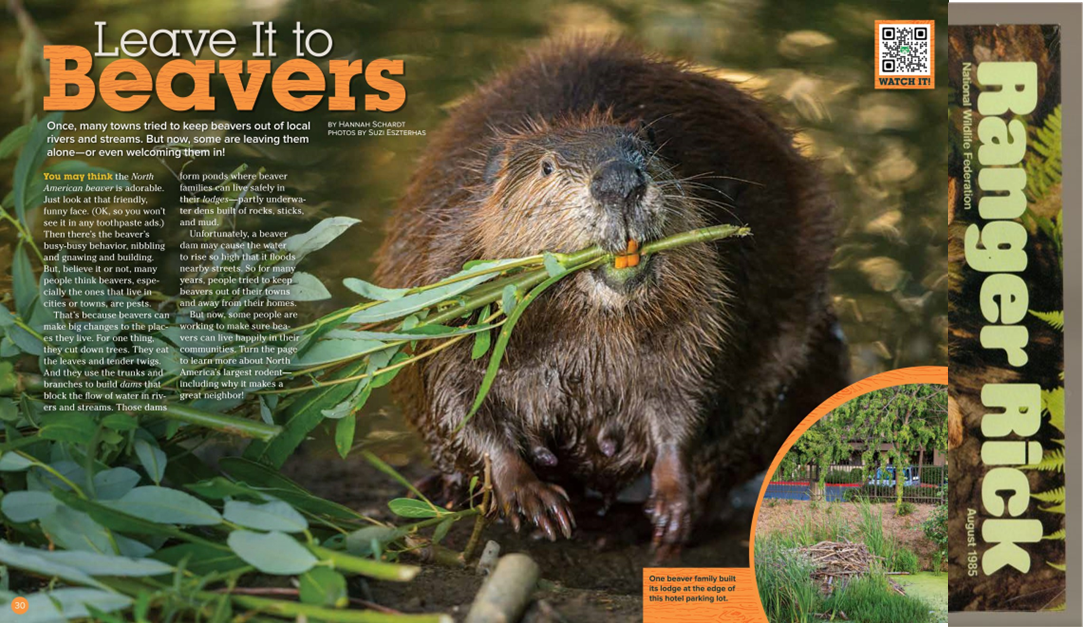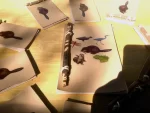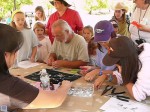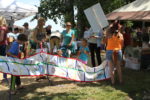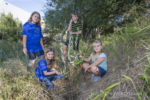

So amazing, in fact, that she was recently invited to a biodiversity and climate change workshop at Tufts University in Boston. (Which is about as close as you come in this line of work to being a rock star). Because the university is among the finest in the land, the web page for the conference has everyone’s presentation and slides up and downloadable. You could spend many hours but, start with Carol and Jon, who are a superhuman tagteam of why to live with beavers.
I know that everyone is busy and maybe thinking you don’t have time to watch. But believe me, you should. Here’s my favorite slide of Carol’s, showing the ground water increases adjacent to a beaver dam.
 (That’s a little thing beavers do called “recharging the aquifer”.)
(That’s a little thing beavers do called “recharging the aquifer”.)
 And just in case you are inclined to watch hers and not his, I will warn you that you would be making a very grave error. Because Jon Grigg’s straightforward, plainspoken presentation is wonderfully powerful. I can completely understand why they have had such success all over the state because of his resonance. I don’t agree with every single thing he says, but that is how collaboration works. You form alliances based on mutual interests and set aside disagreements until you get things accomplished. And I am proud to think both of them are allies in our work to educate folks about beavers.
And just in case you are inclined to watch hers and not his, I will warn you that you would be making a very grave error. Because Jon Grigg’s straightforward, plainspoken presentation is wonderfully powerful. I can completely understand why they have had such success all over the state because of his resonance. I don’t agree with every single thing he says, but that is how collaboration works. You form alliances based on mutual interests and set aside disagreements until you get things accomplished. And I am proud to think both of them are allies in our work to educate folks about beavers.
Wasn’t that awesome? That’s right, now even Nevada knows more about beaver restoration than California. Sigh.
I got a call this week from a producer working on a beaver film for the UK, he wanted to make the argument for beaver reintroduction there and will be interviewing Carol, Mary Obrien and Michael Pollock, among others. They will be doing the bulk of their filming in Nevada and Oregon, but I made a strong case for urban beaver restoration and pitched what we had done and what Napa was currently doing. He was actually really interested in including Napa because it was so well known and was going to pitch the idea to his team. Fingers crossed, their local beavers maybe stars someday.
It’s been a weirdly busy month. In addition to everything else, I received a disappointing note that my beaver article won’t be included in this ‘Phoebe’ newsletter for the Sierra Foothill Audubon Society because it got bumped for climate change. Hrmph. Another year of massive beaver depredations in Placer county I bet. Hopefully it can appear sometime in the future. In the meantime, I received a great video this morning about genetic resilience and climate change in cottonwoods, that actually has a segment on the importance of beavers. The title is aptly a quote from Martinez’s own John Muir.
Its very well done, I learned several new words and you will be much smarter at the end than you were at the beginning. It won’t let me embed it here, but click on the title to go see for yourself. The beaver segment starts at 31.20. Just remember, we are what we learn.
A Thousand Invisible Cords: Connecting Genes to Ecosystems, the complete movie from Research on Vimeo.
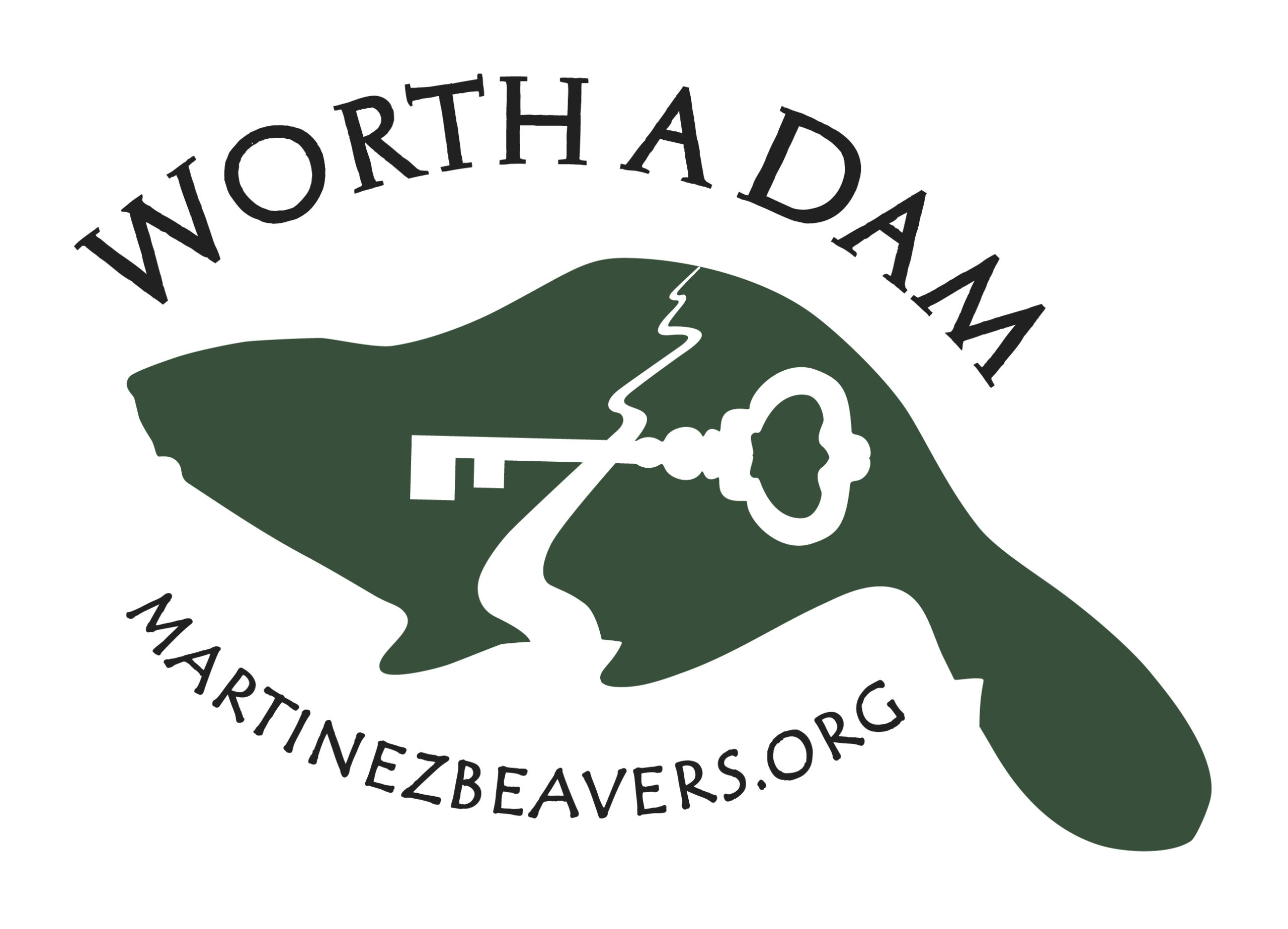




 and fisher. The muskrats are tossed by their tails, but the beavers are thrown from a plane and dropped by parachute.
and fisher. The muskrats are tossed by their tails, but the beavers are thrown from a plane and dropped by parachute.




